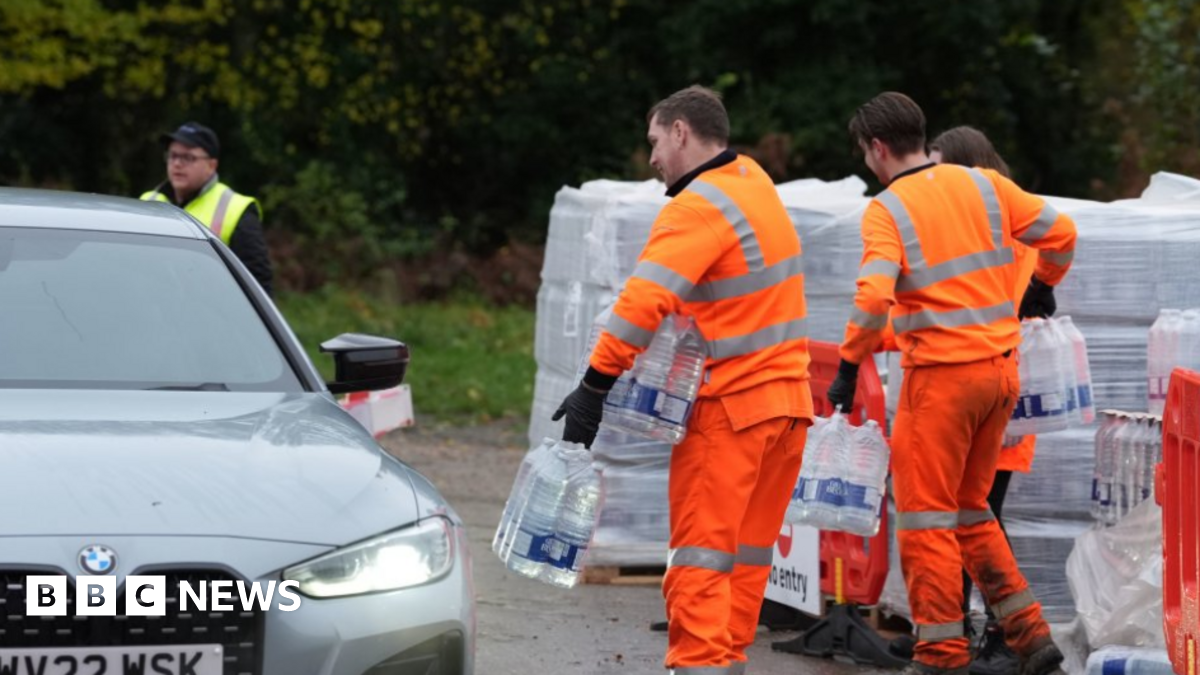Mooresville addresses sewage smell from wastewater treatment plant – WRTV

Environmental and Public Health Incident Report: Mooresville Wastewater Treatment Plant
Executive Summary
The Mooresville Wastewater Treatment Plant is experiencing a significant operational failure, resulting in the discharge of untreated waste into White Lick Creek. This has created a persistent and noxious odor, severely impacting the quality of life for local residents and raising concerns regarding public health and environmental safety. An investigation by the Indiana Department of Environmental Management (IDEM) has confirmed the discharge of solids and identified high-strength industrial waste as the likely cause. This incident directly contravenes several United Nations Sustainable Development Goals (SDGs), most notably SDG 6 (Clean Water and Sanitation), SDG 3 (Good Health and Well-being), and SDG 11 (Sustainable Cities and Communities).
Incident Analysis and Findings
IDEM Investigation Results
Following a request from Plant Superintendent Calvin Boultbee, IDEM conducted an investigation on November 12. The key findings include:
- Visual confirmation of “obvious signs of solids being discharged into the receiving stream.”
- Attribution of the pervasive odor to “ongoing high-strength industrial wastestreams” entering the plant.
- Identification of unprecedented chemical compounds in the inflow, which the current treatment infrastructure is unable to process effectively.
Community and Environmental Impact
The failure of the wastewater treatment process has led to severe consequences for the local community and ecosystem, undermining fundamental development goals.
- Public Health and Well-being (SDG 3): Residents living downstream report a pungent odor comparable to an “open sewer,” forcing them to take measures such as applying Vicks VapoRub to sleep. This constant exposure to foul air diminishes well-being and poses potential health risks.
- Environmental Degradation (SDG 14 & SDG 15): The discharge of untreated solids and chemical compounds into White Lick Creek directly pollutes the waterway, threatening aquatic ecosystems (Life Below Water, SDG 14) and the surrounding environment (Life on Land, SDG 15).
- Sustainable Communities (SDG 11): The incident degrades the local living environment, making the community less safe, healthy, and sustainable for its inhabitants.
Alignment with Sustainable Development Goals (SDGs)
Primary SDGs Compromised
The situation in Mooresville represents a critical failure to meet core sustainability targets.
- SDG 6: Clean Water and Sanitation: The plant’s inability to safely manage and treat wastewater, leading to the pollution of a natural water body, is a direct violation of this goal’s objective to ensure the availability and sustainable management of water and sanitation for all.
- SDG 12: Responsible Consumption and Production: The identification of “high-strength industrial wastestreams” as the root cause points to a failure in ensuring responsible production patterns. This highlights the need for better management of industrial chemical and waste discharge.
Response and Mitigation Strategy
Official Acknowledgment and Recurrence
The Mooresville Town Council has publicly acknowledged the crisis. Council President Tom Warthen confirmed that the plant is receiving inflow with chemical levels never before seen in the superintendent’s 30-year tenure. This is the second such occurrence, following a similar event on Memorial Day Weekend where an initial fix proved insufficient, indicating a systemic challenge rather than an isolated incident.
Collaborative Action Plan (SDG 17)
In line with SDG 17 (Partnerships for the Goals), a multi-stakeholder task force has been formed to develop a permanent solution. This collaborative effort includes:
- The Mooresville Wastewater Treatment Plant
- The Indiana Department of Environmental Management (IDEM)
- Contractors with HTNB
- The Indiana Rural Water Association
Officials have communicated that the issue will “not be a quick fix” but have affirmed their commitment to resolving the environmental and public health challenge comprehensively.
Analysis of Sustainable Development Goals in the Article
1. Which SDGs are addressed or connected to the issues highlighted in the article?
- SDG 6: Clean Water and Sanitation: This is the most directly relevant SDG. The article focuses on the failure of a wastewater treatment plant, leading to the pollution of White Lick Creek. The core issue is the improper management of wastewater and its impact on a local water body.
- SDG 3: Good Health and Well-being: The “persistently stinky situation” described by residents directly impacts their quality of life and well-being. One resident states, “At night when I sleep in my back bedroom, I have to put Vicks under my nose,” which highlights the adverse effects on their living conditions and implies potential health concerns from air pollution.
- SDG 11: Sustainable Cities and Communities: The problem represents a failure in municipal waste management, which is a key aspect of creating sustainable communities. The foul odor and water pollution are adverse environmental impacts of the town’s infrastructure, affecting the safety and quality of life for its residents.
- SDG 12: Responsible Consumption and Production: The article identifies the cause of the problem as “ongoing high-strength industrial wastestreams” and “chemical compounds we have never seen before.” This points to issues with industrial production processes and the environmentally unsound management of chemical waste entering the municipal system.
2. What specific targets under those SDGs can be identified based on the article’s content?
- Target 6.3: “By 2030, improve water quality by reducing pollution, eliminating dumping and minimizing release of hazardous chemicals and materials, halving the proportion of untreated wastewater…” The article directly addresses this target by describing how the wastewater treatment plant is failing, resulting in the discharge of “solids” and “high-strength industrial wastestreams” into White Lick Creek, thereby degrading its water quality.
- Target 3.9: “By 2030, substantially reduce the number of deaths and illnesses from hazardous chemicals and air, water and soil pollution and contamination.” The “pungent” smell described as an “open sewer” is a form of air pollution affecting residents. The discharge of unknown “chemical compounds” into the creek constitutes water pollution, both of which pose risks to human health and well-being.
- Target 11.6: “By 2030, reduce the adverse per capita environmental impact of cities, including by paying special attention to air quality and municipal and other waste management.” The foul odor is an air quality issue, and the entire situation stems from a problem with the town’s wastewater (municipal waste) management. The article highlights the town’s struggle to manage this adverse environmental impact on its citizens.
- Target 12.4: “By 2020, achieve the environmentally sound management of chemicals and all wastes throughout their life cycle… and significantly reduce their release to air, water and soil…” The root cause is identified as industrial waste and new chemical compounds that the plant cannot handle. This indicates a failure in the environmentally sound management of industrial chemicals and waste, leading to their release into the water.
3. Are there any indicators mentioned or implied in the article that can be used to measure progress towards the identified targets?
- Indicator for Target 6.3: The article mentions the Indiana Department of Environmental Management’s (IDEM) investigation, which found “obvious signs of solids being discharged into the receiving stream.” An implied indicator is the ambient quality of the water in White Lick Creek, which can be measured by the presence of solids, chemical pollutants, and other contaminants. The statement about “chemical compounds we have never seen before” implies that progress could be measured by monitoring the concentration of specific industrial chemicals in the plant’s effluent.
- Indicator for Target 11.6: The primary complaint from residents is the smell. An implied indicator is the level of air quality, specifically related to odor pollution. Progress could be measured by a reduction in, or elimination of, the odor, which could be tracked through the number of resident complaints or by using air quality monitoring equipment.
- Indicator for Target 12.4: The article states the problem is due to “high-strength industrial wastestreams.” A key indicator would be the volume and chemical composition of industrial waste discharged into the municipal wastewater system. The plant superintendent’s observation of “levels” he has “never seen” suggests that tracking these levels is a critical measure of the problem.
4. Summary Table of SDGs, Targets, and Indicators
| SDGs | Targets | Indicators |
|---|---|---|
| SDG 6: Clean Water and Sanitation | 6.3: Improve water quality by reducing pollution and minimizing the release of hazardous chemicals and untreated wastewater. | Presence of “obvious signs of solids” in the receiving stream (White Lick Creek); Concentration of new “chemical compounds” in wastewater effluent. |
| SDG 3: Good Health and Well-being | 3.9: Substantially reduce illnesses from hazardous chemicals and air and water pollution. | Resident testimony on the “pungent” and “open sewer” smell impacting their ability to sleep and enjoy their homes. |
| SDG 11: Sustainable Cities and Communities | 11.6: Reduce the adverse per capita environmental impact of cities, paying special attention to air quality and waste management. | The “persistently stinky situation” as a measure of poor air quality; The number of resident complaints about the smell from the wastewater plant. |
| SDG 12: Responsible Consumption and Production | 12.4: Achieve the environmentally sound management of chemicals and all wastes to minimize their adverse impacts. | The presence of “high-strength industrial wastestreams” and unprecedented “levels” of chemical compounds entering the municipal treatment system. |
Source: wrtv.com
What is Your Reaction?
 Like
0
Like
0
 Dislike
0
Dislike
0
 Love
0
Love
0
 Funny
0
Funny
0
 Angry
0
Angry
0
 Sad
0
Sad
0
 Wow
0
Wow
0














































.jpg.webp?itok=0ZsAnae9#)







:focal(1500,1000)/https://media.globalcitizen.org/a6/9a/a69a4720-d8a1-4715-b596-18738d03c05c/rotary_polio_hero_image.jpg?#)

/countries/sri-lanka/photo-credit---dmc-sri-lanka.tmb-1200v.jpg?sfvrsn=dc298bcc_1#)




















